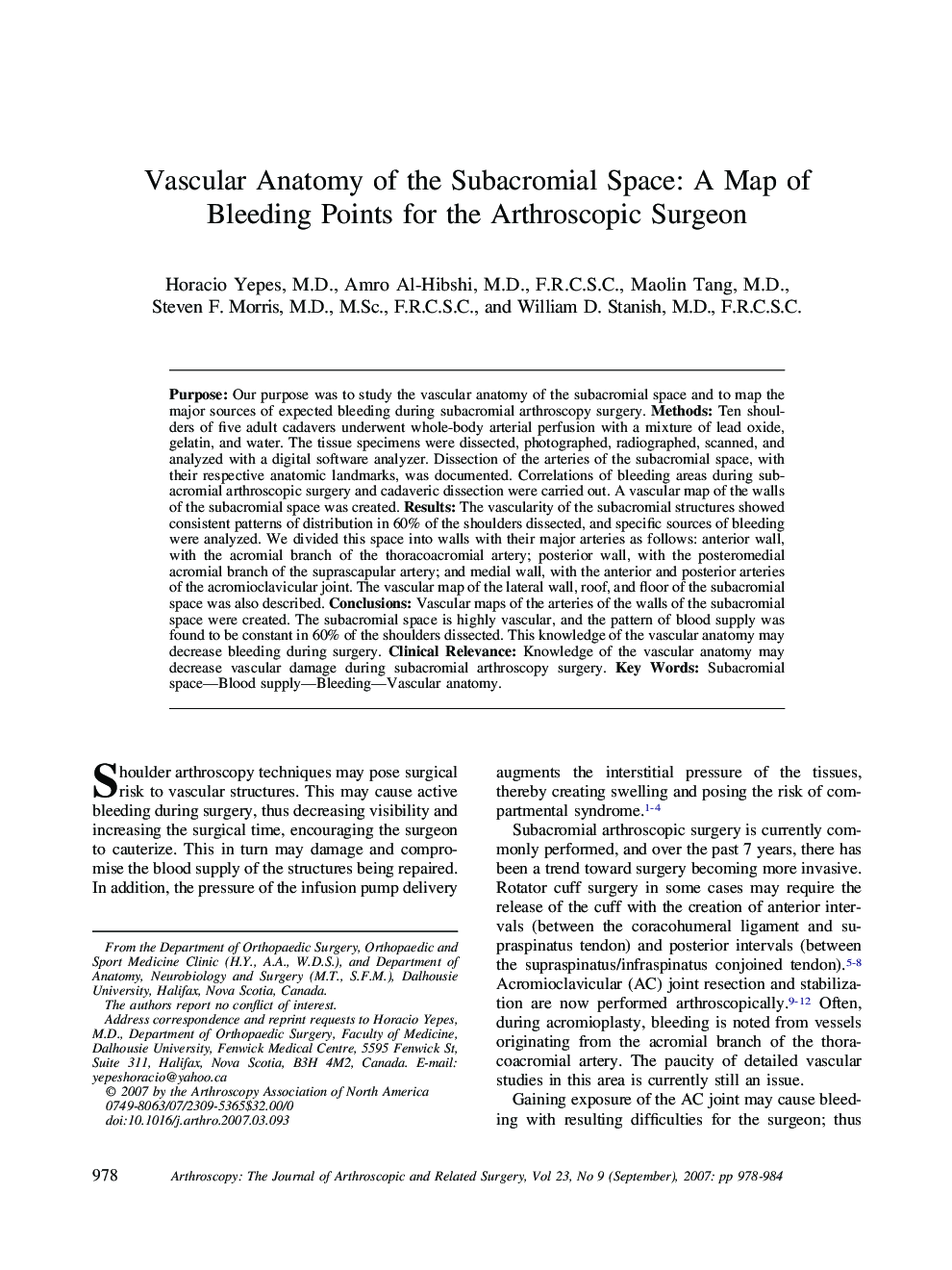| Article ID | Journal | Published Year | Pages | File Type |
|---|---|---|---|---|
| 4046643 | Arthroscopy: The Journal of Arthroscopic & Related Surgery | 2007 | 7 Pages |
Purpose: Our purpose was to study the vascular anatomy of the subacromial space and to map the major sources of expected bleeding during subacromial arthroscopy surgery. Methods: Ten shoulders of five adult cadavers underwent whole-body arterial perfusion with a mixture of lead oxide, gelatin, and water. The tissue specimens were dissected, photographed, radiographed, scanned, and analyzed with a digital software analyzer. Dissection of the arteries of the subacromial space, with their respective anatomic landmarks, was documented. Correlations of bleeding areas during subacromial arthroscopic surgery and cadaveric dissection were carried out. A vascular map of the walls of the subacromial space was created. Results: The vascularity of the subacromial structures showed consistent patterns of distribution in 60% of the shoulders dissected, and specific sources of bleeding were analyzed. We divided this space into walls with their major arteries as follows: anterior wall, with the acromial branch of the thoracoacromial artery; posterior wall, with the posteromedial acromial branch of the suprascapular artery; and medial wall, with the anterior and posterior arteries of the acromioclavicular joint. The vascular map of the lateral wall, roof, and floor of the subacromial space was also described. Conclusions: Vascular maps of the arteries of the walls of the subacromial space were created. The subacromial space is highly vascular, and the pattern of blood supply was found to be constant in 60% of the shoulders dissected. This knowledge of the vascular anatomy may decrease bleeding during surgery. Clinical Relevance: Knowledge of the vascular anatomy may decrease vascular damage during subacromial arthroscopy surgery.
